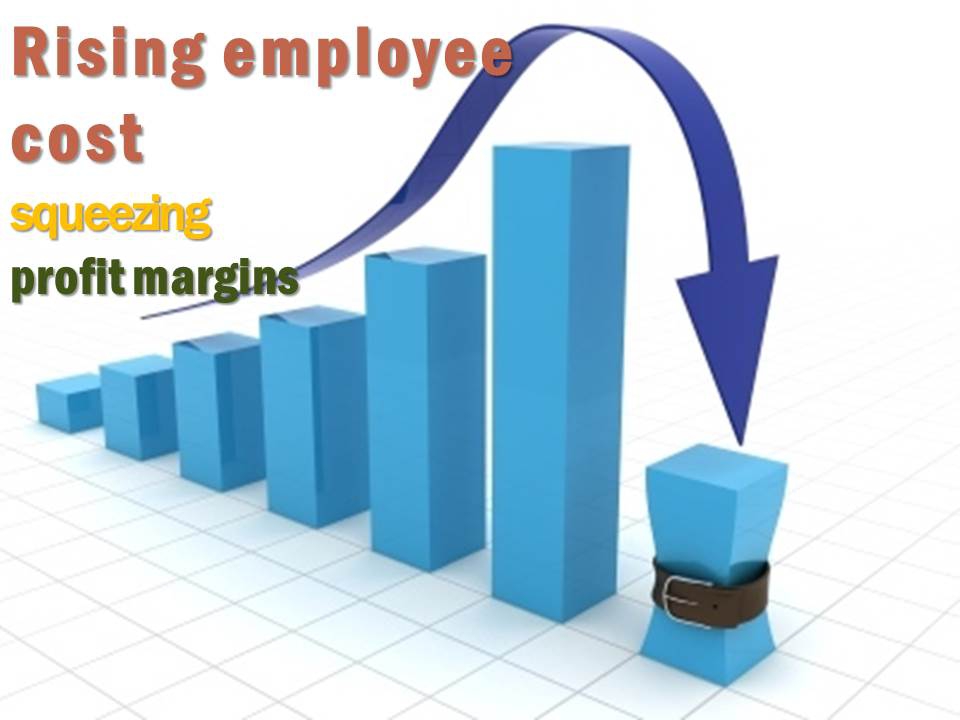The employee cost of organisations has increased from 7.6 per cent of the revenue in 2012, to 11.3 per cent in FY16.
A recent study of 442 companies, that are a part of the BSE 500, revealed that their employee cost had outrun their revenue growth in the past few years. While their revenue has grown at a CAGR of 8.6 per cent between FY11 and FY16, their employee expense has risen at a CAGR of 13.4 per cent during the five-year period.
The race for talent has become tougher and more demanding in the past few years and the proof of the pudding lies in the fact that the employee cost of these organisations—which was 7.6 per cent of the revenue in 2012— has now grown to 11.3 per cent in FY16, consequently shrinking their margins. In fact, this year witnessed the worsening of this situation with a revenue de-growth of 4.3 per cent accompanied by a rise of 8.2 per cent in employee expense.
Prabir Jha, global chief people officer, Cipla shares, “Unfortunately this is a rising trend. Part of it comes from the intensifying war for the right talent. A big part though is to do with the tolerance of mediocrity in several companies in India”.

Pradeep Mukerjee, founder and director of Confluence Coaching & Consulting, concurs, “If you look at it in the financial sense, this drift is not at all sustainable. It can be easily attributed to the war for talent – which is rather perceptive than real – as the pay packages offered to fresh graduates hired from premier institutes are more ego-driven and largely influenced by competition, than being solely calculative.”
“Revenues will surely grow with better talent strategies in place. However, salaries in the recent past have grown more without a strong basis”, he adds.
Looking at the situation and considering the current state of the Indian economy, one may assume that the revenues may follow as a result of high-performing talent on-board. However, organisations need to be meticulously calculative in projecting revenues and offering exorbitant pay packages or hikes.
“The biggest human resources spend occurs at the CEO level as the cost of hiring a CEO has blown out of proportion in the recent past.”
In addition, a bigger challenge with organisations currently is the efficiency in capitalising on talent than solely grappling with the shortage of talent.
The CEO salaries in fact, have also grown disproportionately in the recent few years.
Mukerjee says, “The biggest human resources spend occurs at the CEO level as the cost of hiring a CEO has blown out of proportion in the recent past. The gap between CEO salary and the median salary in most organisations is widening significantly. This, in turn, is promoting an individualistic culture in times when so much is being talked about team work”.

Such pay gaps certainly send out a demotivating message to the workforce, which is also why Infosys at the time of its founder N R Narayana Murthy, was careful about the gap between the CEO salary and the median pay, until the last few years.
Although, the industry appreciated the salary hike offered to the new CEO Vishal Sikka, Murthy’s ideals of social equity did hold significant value for the rest of the workforce.
Experts believe that the one thing that organisations need to be more open about is differential pay practices depending on skills and performance.
Jha opines, “While variable pay has made its way into many companies, it is still not pervasive or adequately proportioned. The reluctance to have difficult conversations and the unwillingness to get comfortable with differentiation has bred a dangerous sense of socialism. The risk to enterprise competitiveness and sustainability on account of all this is obvious”.
“The reluctance to have difficult conversations and the unwillingness to get comfortable with differentiation has bred a dangerous sense of socialism.”
At the same time, Mukerjee believes, “It is time, organisations start specifying critical skill sets for differentiating salaries, which some organisations have already adopted as a talent strategy. Salaries need to be competitive for only certain specific skills and not for all”.
No doubt, revenue growth follows great performing talent, which is why it is critical that while assessing talent, companies consider how revenue-per-hire has changed over the last few years, and how well it supports the business today and tomorrow.



